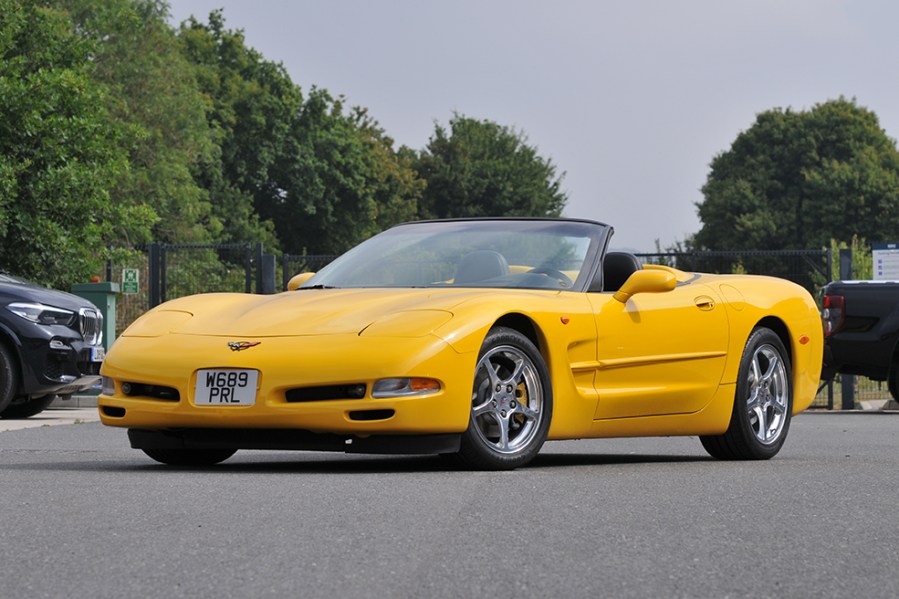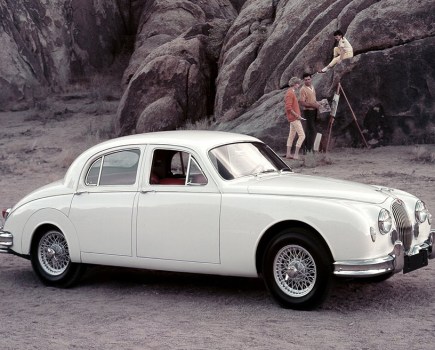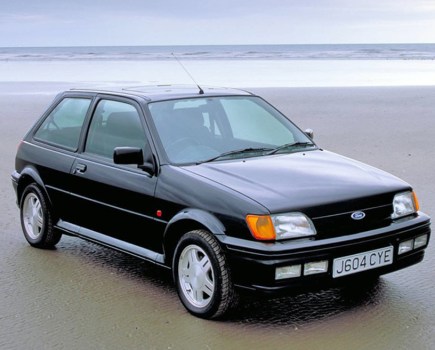The Corvette C5 distils muscle car character into a useable modern classic package. Here’s how to buy a great example
Images: Paul Wager With thanks to: Rob Tring and Nigel Dobbie from Classic Corvette Club UK
Running an American classic in the UK might be viewed as a niche experience by some enthusiasts, but that hasn’t stopped many taking the plunge. The desire to own something different is one reason, but US cars can also provide all the style and distinctive driving experience you could ask for. When it comes to the legendary Corvette, there’s an abundance of both qualities – so much so that it can be considered alongside the likes of the Porsche 911 and Jaguar XK8.
Corvette is a name that dates back more than seventy years, but of the eight generations produced so far we’re concentrating on the fifth – the C5. Launched in 1997 – it would have been earlier but for troubles within GM – buyers would ultimately get the choice of hardtop/coupe, convertible and fixed-roof coupe (essentially a convertible with a fixed hardtop) versions, with all of them powered by characterful V8 engines. The 5.7-litre LS1 made 345bhp but the Z06 model of 2001 offered a more tempting 385bhp, which grew further still a year later.
The Corvette C5 was substantially changed compared to its predecessor and there was plenty of innovation, from a new chassis design to electronic gadgetry; by the time production ended in 2004, around a quarter of a million had rolled out of the Kentucky factory.
Bodywork
As with any car featuring glassfibre and composite bodywork, plenty of time should be spent examining the condition of the C5’s panels and paintwork. Rectifying damage requires specialist skills which don’t come cheap, so establish the cost of repairs before taking the plunge on a car suffering from cracks or scrapes.
The low front end is prone to damage, so take a good look at the bottom of the bumper/air dam. Incorrect jacking can damage the sills, too.
It is important to establish that a recent US import isn’t hiding a murky past, such as being written off. The Corvette C5 was officially imported to Europe, however, with changes including a rectangular fog lamp at the rear and different headlights; the correctly-dipping UK-spec T85 items are getting hard to find.
The Corvette C5 was also the last generation to get pop-up units. There are plastic gears within the mechanism which can wear out, but fitting metal replacements solves the problem.
Assuming the bodywork is sound there shouldn’t be too much to worry about when it comes to the chassis; constructed from hydro-formed steel tubes, it’s rare to find one that’s suffering from corrosion.

Engine and transmission
American buyers expected their V8 engines to be tough and long-lasting so it’s no surprise the LS units in the C5 are pretty bulletproof. Naturally, proper maintenance is key to longevity, so check for a record of regular oil and filter changes and that the spark plugs on an LS1 have been changed at the 100,000-mile mark.
It’s going to be easier to establish the service history on cars that have been in the UK for a long time; more recent imports will sometimes require some more complicated piecing together of documents and records.
In any case, the LS V8 engines are easy enough to work on for keen DIY mechanics, while a decent number of American car specialists exist in the UK if not.
There are some known issues to watch out for, however. The fuel system can suffer from a faulty gauge and a noisy main pump: the first issue will usually be cured with a new sender unit (be aware of design changes when ordering parts), while the second is annoying rather than serious and a new unit should solve the issue.
If the oil pressure gauge gives a positive reading even with the engine off, suspect a faulty sender. This lives at the rear of the engine, below the inlet manifold.
The Driver Information Centre (DIC) can store fault codes – both current and historic ones – and there’s a button-pressing process to access them. It’s well-worth doing (especially after a test drive in case they’ve been cleared beforehand), and while the procedure is too long to detail here, the internet or owners’ club can provide it.
Transmission options are a six-speed manual or four-speed automatic, with both capable of high mileage without significant issue. The former can suffer rattles from the clutch area but this is considered normal – although it’s a good idea to ensure the clutch itself is healthy with no signs of slipping. Replacement is a labour-intensive process that involves disconnecting and moving the rear subframe, and it’ll cost a few thousand pounds; evidence of recent renewal is obviously good news.
Gear changes on automatics should be smooth and positive (anything else will need further investigation), while changes of fluid and filter will keep things healthy. Also check the differential for leaks; these are not uncommon but straightforward to cure.
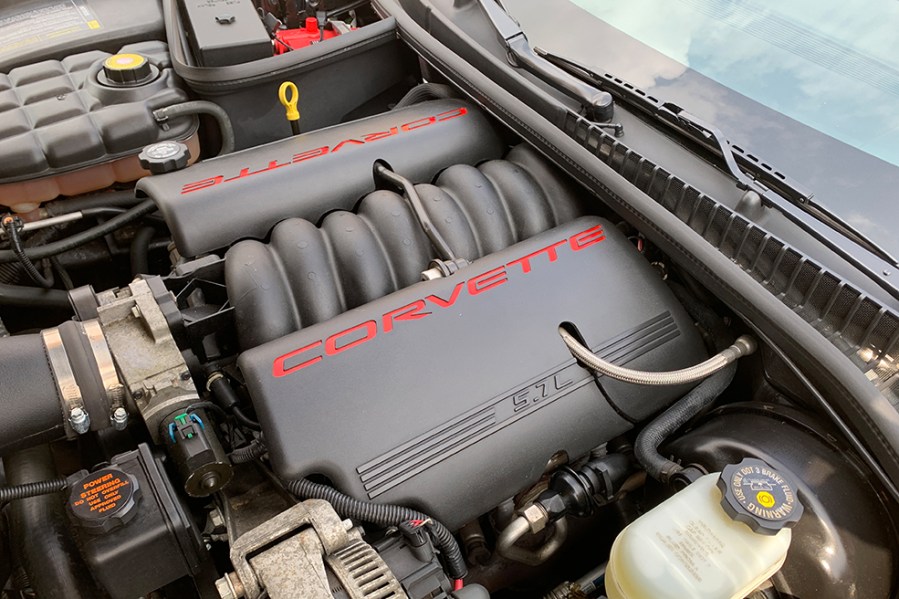
Suspension, steering and brakes
The Corvette C5’s use of transverse composite leaf springs was somewhat unusual for a sports car, but it worked well in practice paired with either standard dampers or an electronically-controlled adjustable set up. Either setup offers a decent blend of ride and handling and nothing much to worry about in terms of reliability.
Sourcing replacement parts from UK suppliers or the US is straightforward, and while some owners report problems with creaking anti-roll bar bushes, a squirt of lubrication should solve it. Watch for uneven tyre wear, which can point to suspension alignment issues from impact damage.
The braking system featured vented discs and aluminium calipers which were more than up to the task, and aside from the usual wear there’s little to report. Make sure that ABS and traction control systems are working correctly with no dashboard warning lights.
A potential major issue is a problem with the Corvette C5’s electro-mechanical steering lock where it remains locked and the car undriveable. GM issued a number of recalls to tackle it, but some examples still suffer.
While a bypass can be installed to get around the issue, there simply isn’t the space here to explain the full extent of the problem; with a wealth of information available from club and specialist sources, we’d recommend undertaking further research.
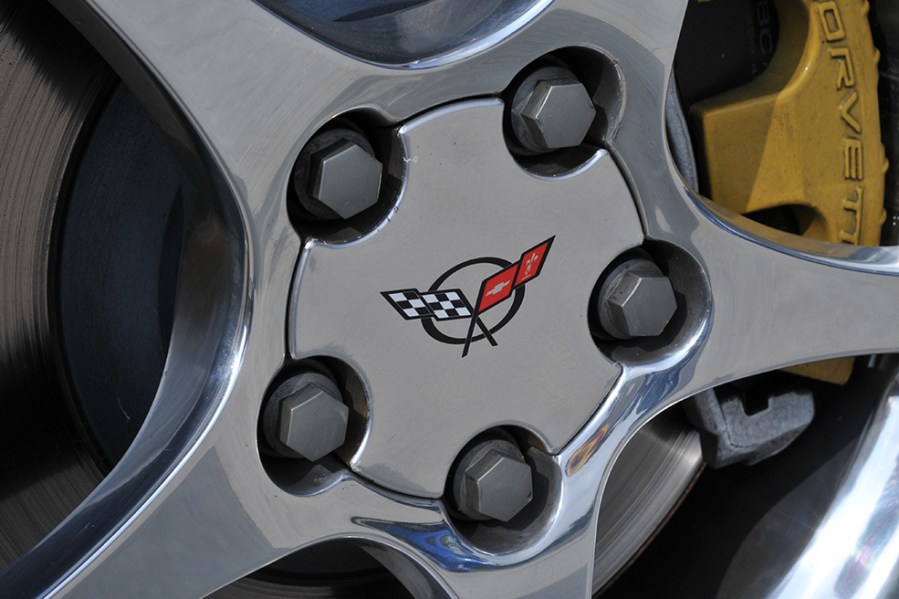
Interior, trim and electrics
The Corvette C4 was hardly mean when it came to equipment levels, but the C5 really boosted the luxury with the likes of high-end sound systems, a head-up display and plenty more. The important thing is establishing the precise specification of any potential purchase, while ensuring that everything is still working.
Take a good look at the seats, as side bolsters can get a bit threadbare and bases can sag. Seats moving slightly under acceleration and braking isn’t uncommon and can be fixed, but remember to check that adjuster mechanisms haven’t failed; these can prove a bit fragile.
The interior can also suffer from damp carpets – especially the passenger side – which is usually caused by blocked scuttle drains. They can be accessed via the wheelarch if clearing is necessary, which is worthwhile because water build-up will drown the wiper motor leading to short circuits and strange operation.
Indeed, it’s the electrical side of the C5 that needs plenty of attention as a mix of complexity and fairly common faults can cause all manner of headaches – a car exhibiting numerous gremlins is probably best avoided.
Poor earth connections is one issue, and it’s worth checking the integrity of the main points on the chassis rails and behind the headlights. A failing battery can bring up spurious warning lights and error codes, so check the state of charge before assuming the worst. Much more important is ensuring that acid leakage hasn’t damaged the delicate electronics that sit beneath the battery.

Chevrolet Corvette C5: our verdict
It’s hard to think of a sports car that offers this much character and performance for such relatively little cash: it really is an awful lot of bang for the buck. Perhaps that’s the appeal of American cars in general, but in the Corvette you truly are buying into an automotive legend – and one that’s very hard to resist.
There’s a lot to like about the C5, from the noise and outright pace to strong levels of comfort, but it’s important not to get too carried away with all the pizzazz; there are a few issues that could spoil the ownership experience. Avoid anything with poor bodywork or suffering from electrical niggles and you’re in for a proper American treat.
Naturally, there is potential to import a good Corvette C5 from the US; the Classic Corvette Club UK will be able to advise if that’s the route you fancy. But for the purposes of this guide we’re going to focus on the cars already in the UK.
We found around twenty for sale without searching too hard and that’s without considering cars being sold within the owner’s club, so we’d encourage joining before beginning a search.
The vast majority of Corvette C5 examples are automatics with less than 100k miles on the clock, while the cheapest we found were a little under £13,000. There are quite a few at the £15,000–19,000 mark, with the priciest Z06 advertised at around £23,000. Expect the absolute best to fetch more, but there doesn’t seem much need to stretch the budget above £20,000 for a very nice C5 to use and enjoy.

Chevrolet Corvette C5 timeline
1997
The C5 is launched as a coupe or convertible, with both powered by the 345bhp LS1 V8 engine.
2001
Chevrolet adds the Z06 to the range. The LS6 V8 has more power and there’s uprated suspension and brakes to handle the extra performance. Around 60kg is saved by measures including a titanium exhaust, less sound-deadening and thinner glass.
2002/03
The Z06 benefits from engine mods that liberate an extra 20bhp, meaning a 0-60mph time that dipped below four seconds. The 50th anniversary model of 2003 featured special paint and trim and lots of standard kit.
2004
After almost 250,000 units produced, the C5 is replaced by the C6 with its heavily-revised bodywork and mechanicals.

